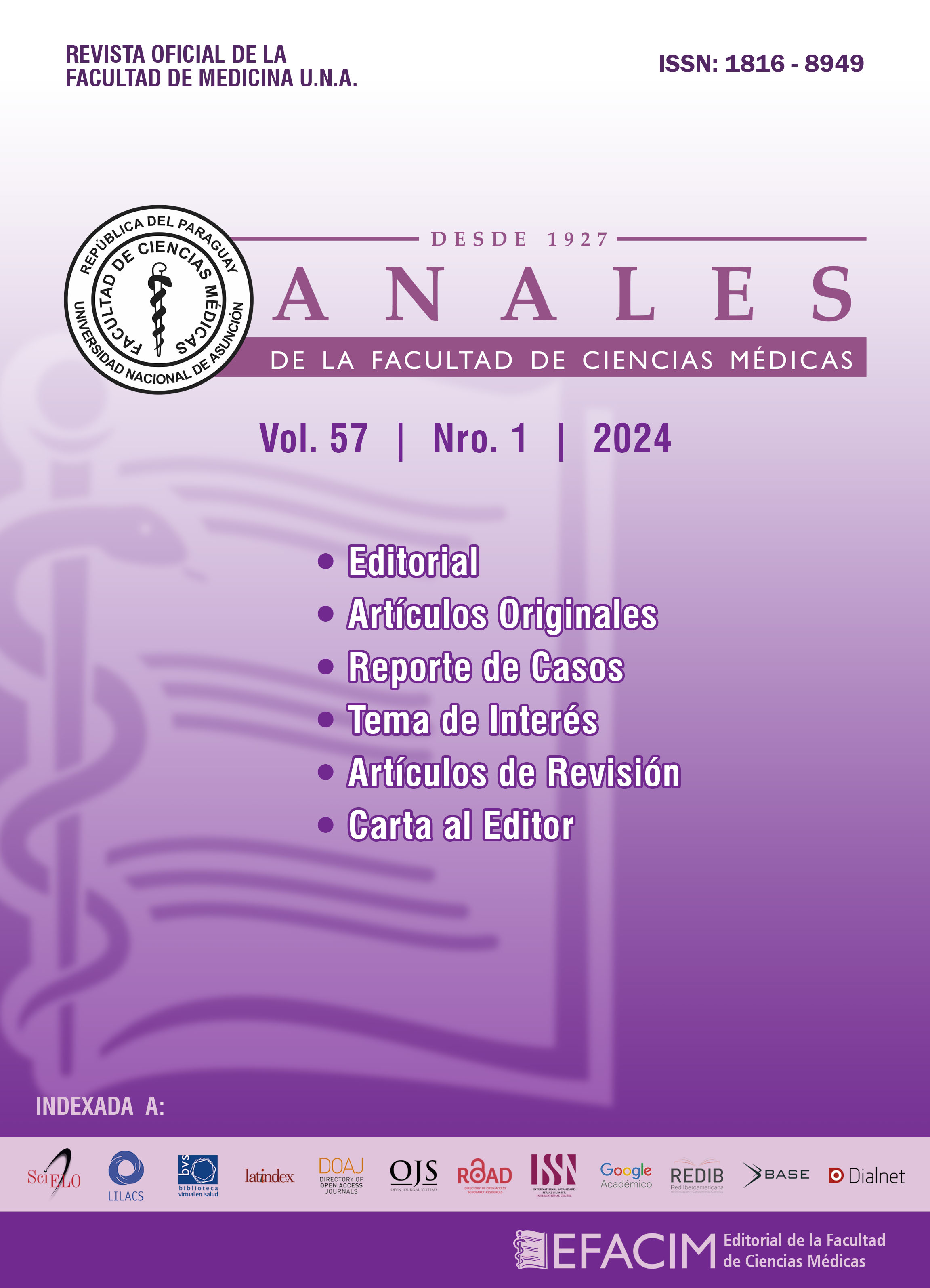Manejo terapéutico de actualidad de heridas complejas del tercio distal de la pierna en el Hospital de Trauma (Prof. Manuel Giagni) y en la Unidad de Cirugía Plástica de la Facultad de Ciencias Médicas – UNA
Palabras clave:
traumatismo de pierna, colgajos, cirugía reconstructiva de miembrosResumen
Introducción: La herida es una pérdida de continuidad de la piel o mucosa producida por algún agente físico o químico. Una herida es “compleja” cuando por su extensión, localización, profundidad o exposición de elementos nobles, necesita para su curación una terapéutica especial. Este es el caso de heridas con compromiso tisular que afecta a estructuras como músculos, fascias, tendones, huesos, vasos sanguíneos, nervios o las lesiones de lenta evolución como úlceras o escaras. Objetivos: Determinar el método de reconstrucción más utilizado en el manejo terapéutico de las heridas complejas del tercio distal de la pierna en los pacientes atendidos en el Hospital de Trauma y en la Unidad de Cirugía Plástica de la FCM – UNA. Materiales y métodos: Estudio de diseño observacional, tipo de estudio descriptivo y retrospectivo. Fueron incluidos pacientes de ambos sexos, mayores de edad, con heridas complejas en el tercio distal de la pierna, atendidos en el Hospital de Trauma y en la Unidad de Cirugía Plástica de la FCM – UNA, durante el periodo 2010 al 2019. Resultados: Se incluyó a 112 pacientes de los cuales el 80,36 % fue hombres y el 19,64 % mujeres. Las edades estaban comprendidas entre los 18 y los 73 años y una media de 33,8 ± 14 años. La edad más frecuente fue 18 años. La mediana de edad es de 30 años, lo que implica que la mitad de la muestra tuvo por lo menos dicha edad. En cuanto a la procedencia, el 41,07 % era del interior, el 30,36 % del departamento Central y el 28,57 % restante de Asunción. En cuanto al mecanismo de la lesión, se puede observar que el mecanismo más frecuente fue el accidente de tráfico, seguido por caída de altura, en un gran porcentaje. En cuanto a la evolución y complicaciones se puede ver que 92 individuos, o sea 82 % de los pacientes no tuvo ninguna evolución negativa o complicaciones. Lo más común fue la infección con 1,9% de prevalencia, la pérdida parcial del colgajo o piel representan el 2,4%, dehiscencia de la sutura el 0,9 %, hematoma 0,6 % y pérdida total del colgajo 0,54 %. En cuanto al tratamiento aplicado, se debe tener en cuenta que los pacientes pudieron haber recibido más de un tratamiento por lo que el tamaño de la muestra se refiere a las visitas. El tratamiento más frecuente fue el colgajo sural con 28,57%, tutor externo con el 20,19%, injerto de piel 16,46%, toillete 12,73% y colgajo fascio - cutáneo en 6,21%. Conclusión: La gran mayoría de los casos tratados corresponde a algún tipo de accidente de tránsito. Se necesita de un equipo multidisciplinario: ortopedistas, cirujanos plásticos, cirujanos vasculares, fisioterapeutas, etc. en trabajo coordinado para tratar estas graves lesiones de forma a obtener resultados favorables. Para la cobertura de la pierna traumatizada, con exposición ósea, recurrimos a los colgajos musculares, en el 1/3 proximal el gemelo, en el 1/3 medio el sóleo. Para la cobertura del 1/3 distal de la pierna utilizamos el colgajo neuro-veno-fascio-cutáneo (sural) a pedículo distal.





